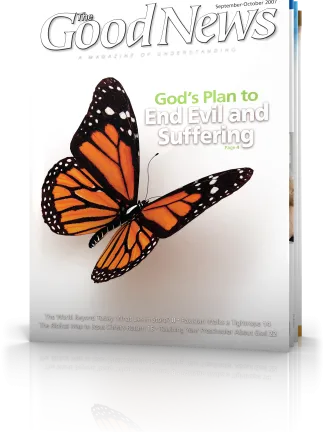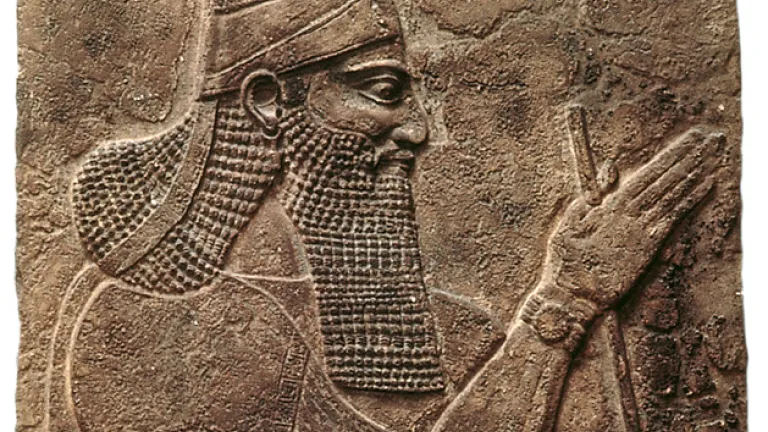God, Science and the Bible: Archaeological Discovery Confirms the Bible (Yet Again)
The British Museum recently announced the discovery of a remarkably significant cuneiform inscription within its vast collection of Mesopotamian tablets. Many are hailing it as sensational proof of the accuracy of the Old Testament—as indeed it is.
The British Museum recently announced the discovery of a remarkably significant cuneiform inscription within its vast collection of Mesopotamian tablets. Many are hailing it as sensational proof of the accuracy of the Old Testament—as indeed it is.
Searching for Babylonian financial accounts among the ancient records, Michael Jursa, a visiting professor from Vienna, came across the name of a court official of the famed Babylonian king Nebuchadnezzar (The Daily Telegraph, July 13, 2007). The name is also found as one of the king's officials in the book of Jeremiah, though with a slightly different spelling.
More than 2,500 years old, the tablet—which sat in the museum's collection since 1920 with its significance unrecognized (The Times, July 11)—identifies Nabu-sharrussu-ukin as the chief eunuch of Nebuchadnezzar. This equates to "Nebo-Sarsekim" in the Hebrew of Jeremiah 39:3 (New International Version).
Actually, this new information helps with a translation problem in the verse. Most Bible versions do not obviously contain this name. The King James Version lists the names in Jeremiah 39:3 as "Nergal-sharezer, Samgar-nebo, Sarsechim, Rab-saris, Nergal-sharezer [and] Rab-mag."
The New King James Version's list of names is essentially the same, although it offers footnotes that Rabsaris and Rabmag are titles. Other translators recognize that two individuals in this list are named Nergal-sharezer—leading them to conclude that the word following each individual is a further identifier so as to distinguish between them.
Notice the New International Version's list of the names: "Nergal-Sharezer of Samgar, Nebo-Sarsekim a chief officer, Nergal-Sharezer a high official and all the other officials of the king of Babylon."
Here Samgar has been reckoned as a place name associated with the first Nergal-Sharezer rather than as part of a compound name with Nebo, which follows it, as in the King James Version. Thus, in the NIV, Nebo is taken to be the first part of the name Nebo-Sarsekim. And indeed, the new discovery shows that this is the name of one of Nebuchadnezzar's chief officials.
Bible critics who claim that the book of Jeremiah is a fictitious account written centuries after the Babylonian period are hard-pressed to explain away such accuracy as recording the names of relatively minor foreign figures.
One difficulty that has long faced the Bible's critics is its many mentions of seemingly insignificant names inserted here and there. Some speculate that they were added to make the accounts merely look authentic. Others suggest that people important to stories of later times are surreptitiously inserted into earlier accounts or serve a poetic function.
Yet how do you explain listing someone like Nebo-Sarsekim—a minor figure of a foreign land with a difficult name who is never mentioned again—and this turning out to be correct? Clearly, the author of Jeremiah was familiar with the details of the times in which he wrote and was concerned with accuracy. The obvious conclusion is that this book was indeed written by Jeremiah at the time of the Babylonian conquest of Judah under Nebuchadnezzar.
This discovery is just the latest archaeological find proving the accuracy of the book of Jeremiah. A recent excavation in Jerusalem uncovered a bulla, a hardened clay impression with the imprint of a seal, bearing the name of Jehucal, son of Shelemiah, son of Shevi. This individual, a court official serving under King Zedekiah, is mentioned in Jeremiah 37:3 and 38:1-4.
Another bulla found not far from this one has on it the name Gemariah the son of Shaphan, the royal scribe (36:10). And before these, two remarkable bullae were found bearing the name of Jeremiah's scribe Baruch the son of Neriah.
All of these were real people, as Jeremiah attests. The evidence shows that the book of Jeremiah relates real history—as does the rest of the Bible. GN







